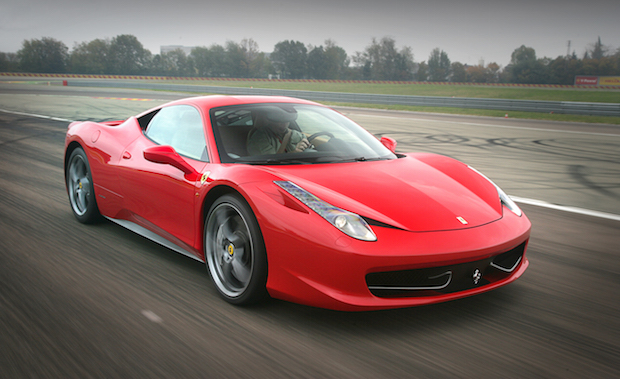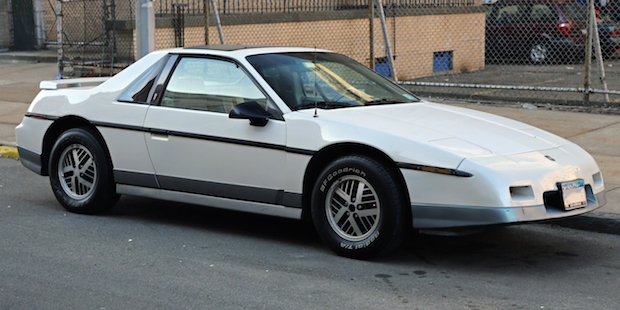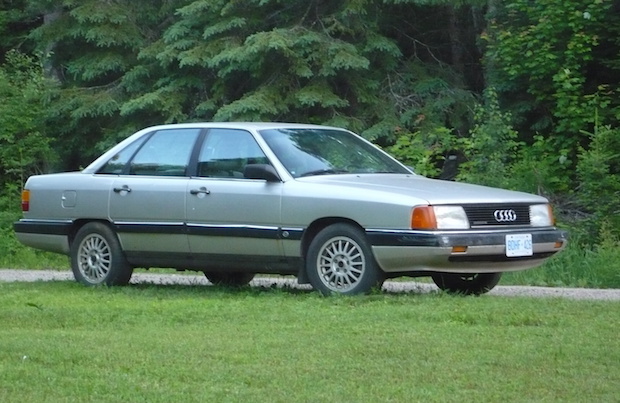The 10 Most Dangerous Cars Ever
There are some cars you would expect to be on this list, while others might surprise you. Here is our detailed list of the 10 most dangerous cars in the world.
Ford Bronco II

One thing modern cars can be proud of is their composure at speed. Even in an inexpensive economy car, modern understanding of roll centers, center of gravity and dampening means driving at freeway speeds is comforting and reassuring. It wasn’t always like this though. The 1983-1990 Ford Bronco II epitomized some of the terrible handling SUVs from the 1980s and 1990s were known for. Built upon their Ranger truck chassis, the Bronco II was a small, boxy proto-SUV with a high center of gravity and a tendency to roll over while cornering at speed. This design mishap took 43 lives in 1987 alone, but instead of Ford investing in reengineering the Bronco II, they spent that money on the numerous related court cases and scrapped the design. Unfortunately, they didn’t seem to get the message since their 1990s Explorers helped continue the morbid trend.
Ford Explorer

If you’ve ever ridden inside one of these contraptions, the ride quality alone is unnerving. Like the Bronco II, the 1990s Explorer was top-heavy and built on a truck chassis that was never designed for the weight and dimensions of a medium-sized SUV. With the Bronco II debacle in mind, Ford decided that instead of improving upon the suspension layout, they would reduce the pressure in the Explorer’s tires. To add insult to injury, the tires chosen were Firestones that delaminated at 100,000 miles. Not a very safe car, to put it mildly. In fact, research shows that if you’re involved in an accident inside one of these Explorers, you’re sixteen times more likely to die than in another SUV. Figures are disputed still, but dozens of people died in these cars throughout the 1990s. Thankfully, two decades later, Ford seems to have bucked the trend.
DeLorean DMC-12

The DMC-12, more commonly known as the DeLorean, will live on through history as a symbol of 1980s gaudiness. Stainless steel construction, an angular shape and gullwing doors made this car a head-turner. Yes, the gullwing doors were striking and yes, the slender windows gave the DeLorean that sleek, futuristic look, but they weren’t so fashionable in the event of the car flipping. Since the windows were too small for anyone but a starving jockey to pass through and the doors were unopenable when the car was sitting on its roof, exiting an upside-down DeLorean was near impossible without the jaws of life.
Chevrolet Corvair

The DeLorean wasn’t the only innovative American sports car to receive an unhealthy dose of criticism. In fact, this car became the focus a book titled Unsafe at Any Speed. Chevrolet’s Corvair was one of the few American cars to use the rear-engined layout which allowed for a lower silhouette, and improved ride quality and braking ability. When couples with a flawed suspension design, it also gave the car a propensity to go into a massive, unintended slides. The swing-axle suspension design allowed for big camber changes during fast cornering which reduced rear axle stability. Realizing this, the engineers tried to mitigate some of the wayward handling traits by installing a front sway bar, but, despite their urging, the bean counters deemed this too expensive. The result was a series of lawsuits that demolished sales. In addition, the one-piece steering column could implale the driver in a head-on collision. Though the handling was remedied in later years, the early Corvair’s reputation killed sales and made the average motorist wary of rear engine platforms.
Porsche 911 Turbo (930)

Another rear engined-car, the first Porsche 911 Turbo, received its nickname “The Widowmaker” for good reason. With a rearward weight bias, spongy brakes, and an on-off power delivery, the early 911 Turbos were challenging cars to drive. Though manageable in experienced hands, older 911s were squirrely under the brakes or off throttle. When coupled with significant turbo lag, lots of torque and only two driven wheels, the car proved too much for most drivers. Though a respected status symbol, the early 911 Turbo was always feared since it claimed the lives of many drivers and a few celebrities, including NHL goalie Pelle Lindbergh. After a series of wrongful death lawsuits in the late 1970s, Porsche had to offer driver training programs for those who purchased a 911 Turbo. Achtung!
Ford Pinto

Thankfully, any sort of inherent danger cannot be linked to engine placement alone. Gas tank location is another story. The Ford Pinto had two major flaws. First, the automatic transmission had a nasty habit of popping into gear under its own volition, killing two dozen people. The other, better-known vice is the clumsily-located gas tank. Mounted just in front of the rear bumper, an adjoining screw could pierce and ignite the fuel supply if the Pinto was rear-ended. This little design flaw led to twenty-seven fatalities and rather than redesign the car, Ford spent that money on litigation.
Chevrolet Corvette

Selling far more but proving to be even more deadly is the Chevrolet Corvette. The fourth-generation Corvette from the 1980s was by far the deadliest of them all, and though the V8 made a mild 250 horsepower, the combination of narrow tires and aggressive drivers led to a huge number of incidents. The 1985-1987 statistics alone showed 5.2 fatalities per 10,000 cars. While the older Corvettes were not known for their handling prowess, their drivers seem to have had an abnormal level of testosterone, making the Corvette the most death-prone ride on the planet. While the iconic ‘Vette had a bit to do with it, here, the drivers were the culprits.
Ferrari 458 Italia

Many American readers will be relieved at this point to learn that other countries have produced some reprehensible specimens too. Ferrari’s first batch of the 458 Italia caught fire with some regularity due to a flammable adhesive in the rear wheel arches. When the adjacent assemblies began to deform, they would contact the exhaust and – boom – up like a tinderbox. Thankfully, these modern classics are no longer as dangerous due to good, old-fashioned rivets replacing that pesky glue.
Pontiac Fiero

Spontaneously-combusting cars aren’t something the Italians have a monopoly on. Pontiac’s mid-engined Fiero had exotic ambitions but never quite had the panache or build quality to match the likes of Ferrari and Lamborghini. Though the flashy looks caught the attention of some, 1984-1988 Pontiac Fiero wasn’t, deep down, made of tougher stuff. Fires were all too common with these little pseudo-exotics. One cause was a wiring harness located a bit too close to the exhaust manifold, but more commonly thought of were the defective connecting rods which plagued somewhere between 10-40% of all Fieros built. With the hack-job addition of a new sump and oil pan after realizing the engine wouldn’t fit, oil readings were never accurate. Couple this with some con-rod-inspired leakage and combustion had as good a chance happening outside the engine as it did inside.
Audi 5000

The final entrant comes from an unsuspected place. Audis are, in most people’s minds, paragons of safety and refinement. Their quattro four wheel-drive systems have no doubt saved countless lives over the years, but three decades ago, their reputation wasn’t so sterling. The mid-eighties Audi 5000 had a strange quirk of lurching forward under its own will. While Audi maintained that these little transmission tantrums weren’t dangerous in themselves, the panicky reactions from owners led to 7 deaths and over 100 accidents.
Related Content:
The 10 Fastest Road-Legal Supercars
